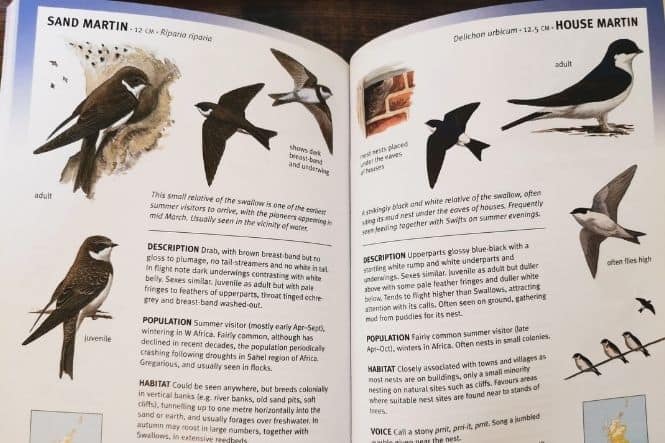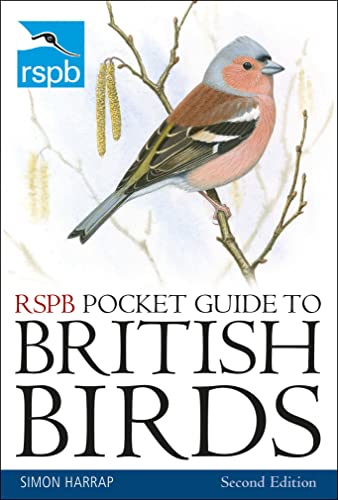If you consider the huge number of bird species around the world then it won’t come as a surprise that they’re all vastly different when it comes to flying. Some birds don’t fly at all while others have a cruising altitude that’s enough to make your head spin.
For keen bird watchers and those who want to know more about nature, there are a lot of questions that need to be answered. How high birds fly is one thing that leaves people scratching their heads. So, in this guide, we’ll be looking at the answer to this and many other of your most burning bird questions.

Do All Birds Fly At The Same Height?
Not all birds fly at the same height. Each species has its own abilities and reasons for the height at which it flies. When you think that there are more than 10,000 bird species around the world, you’ll quickly come to realise that they’re all very unique and this extends to how high they fly.
We will look at some of the highest flying birds a little later on in this guide but for comparison, let’s take a moment to think about those that fly much closer to the ground.
For example, the woodpecker tends to stay closer to the ground when it is feeding as this allows it to move from one place to another more easily. They tend to swoop as they come in land but you will notice that their flight can turn much higher and faster if they are trying to get away from a predator.
How Do Some Birds Manage To Fly So High?
You’re probably familiar with the idea that animals have adaptations that allow them to thrive in their natural habitat. Think about how well moles’ sense of touch works under the ground and how camels have long eyelids to protect their peepers during a sandstorm.
The same is true of birds. Some species have longer beaks to help them access food while others have specially adapted wings that help them to fly higher. These birds might also have a larger lung capacity. But let’s take a closer look at some of these adaptations.
There are three main things that might help a bird increase how high it can fly. You’ll normally only see larger species reaching for the highest heights and this is mainly because of their larger lungs. These enable the bird to take in far more oxygen and they’ll usually do this by hyperventilating. They will do this before flying which helps them as they reach their altitude because up there, there’s nowhere near as much oxygen.
In addition to this, these birds are able to take much longer, slower breaths than birds with smaller lung capacities. But it isn’t only the size of their lungs that’s designed to help them fly higher. Birds that fly the highest have much bigger hearts and this means that they are better able to distribute oxygen around their bodies.
This oxygen needs to be carefully distributed so that the bird has sufficient energy and is able to fly. But the most amazing thing is that they do not need as much oxygen to the brain as other animals. Inside the brain, these birds have cells that can cope with far less oxygen, not to mention smaller blood vessels that are able to deliver a slower, more steady stream of blood.
As oxygen moves around the bird’s body, it doesn’t have as far to travel as these animals have mitochondria. These are cell structures which lie close to the blood vessels and in turn help in the movement of oxygen to other parts of the body including the muscles. In short, they’re designed for high altitude flight!
Why Do Some Birds Fly So High?
According to scientists, some birds may fly at higher altitudes when they migrate. This is seemingly more appropriate for longer flights and removes many of the problems associated with predators. Moreover, the birds are more easily able to cruise with less effort owing to less wind drag.
It is also believed that some birds fly so high during migration because there is less chance of them becoming dehydrated during the journey. Some birds will travel for thousands of miles and if they were to overheat, they’d dehydrate more quickly. However, at higher altitudes, the temperature is much lower so they’ll remain hydrated for longer.
It might surprise you to learn that these birds will travel enormous distances in a short period of time. For example, there was once a formation of birds that was recorded to have travelled 11,000km in just six days between Alaska and New Zealand! It’s no wonder they need the help of the wind to keep the momentum!
Another reason that some birds cruise at such high altitudes is for hunting. Pretty much all species of birds are omnivorous so while they do eat plants, fruits and other things, protein is a significant part of their diet. Depending on the species, this could be anything from worms and insects to small mammals including mice and rabbits.
Birds of prey are larger animals that have incredible eyesight and therefore are some of the most adept hunters on the planet. They hunt from the air and will cruise around looking for movement on the ground. However, if they fly low, they won’t be able to see such a wide area.
For this reason, birds of prey will head higher up to get a good view when hunting. What’s more, the prey on the ground will be none the wiser until the bird takes its opportunity and swoops in for the kill.
As we discussed earlier, birds are adapted to handle these heights and certain birds of prey have some pretty amazing adaptations. For example, the eagle is able to use midday warm thermals as a way of increasing height. When they do this as well as using their strong muscles and large feathers, they can have incredible control over the flight and soar gracefully through the air.
If your looking to identify the birds as you see them this handy little book is great and fits into your pocket, giving you some good detail and great pictures you should be able to easily check what bird you just saw and with a handy map also of the uk stating where abouts these birds are usually spotted, here are a few photos from our copy.


What’s The Highest Flying Bird?
Most birds don’t fly very high at all. In fact, it’s thought that most birds will fly day to day at no more than 500 feet. This is more convenient for the birds and still eliminates dangers. When they fly lower, they are not having to exert as much energy.
Mallards, one of the most common ducks in the UK, are known to be one of the highest flyers in these parts. When they migrate, they can go up to 4000 feet. However, this is nothing compared to some bird species.
The highest recorded bird flight was completed by a griffon vulture who managed to get up to 11,274 metres in the Ivory Coast, Africa. That’s more than 37,000 feet; this is an average cruising altitude for a commercial jet. Imagine taking off to go on your holidays only to see a giant bird flying alongside you!
Of course, this is at the extreme end of things and most high flying birds won’t go over 30,000 feet. But then, that’s still pretty high.
Bar headed geese in the Himalayan regions have been known to fly up to 29,500 feet while swans in Northern Ireland are often seen cruising at around 27,000 feet.
If you’re looking for another record breaker then you might think about the second highest recorded flight of a single bird. This happened in the Himalayas when a crane was spotted at 33,000 feet!
What Are The Risks Of Flying High?
While birds do have bodies that are designed to withstand the pressures of a high altitude flight, there is a limit. One of the risks of flying too high is that the bird will become fatigued. How long this takes will depend on the species and on the health of the individual bird.
However, no bird is likely to just continue flying when they feel like it. They will adjust the height and fly lower as a way of conserving energy until they are ready to take off once again.
That said, birds will suffer with hypoxia (low blood oxygen) when flying very high but fortunately, their bodies are able to cope with this. If the bird begins to struggle to breathe because the oxygen level drops too low, it will once again decrease its height.
While it is unlikely, there could be a chance that a bird might end up flying in a jet stream. Jet streams are only ever located above 30,000 feet so there aren’t many birds that could reach them in the first place.
But even if they can fly that high they’d never enter a jet stream on purpose but if they did accidentally end up in one, they’d likely be blown away since wind speeds can reach up to 250 miles per hour. This would mean almost certain death for the bird.
Are There Times That Birds Fly Lower?
Just because a bird can fly at 30,000 feet, it doesn’t mean that it always will. A bird will fly as high or as low as it needs to and in some cases, the environment and conditions can affect the bird’s ability to get as high.
For example, when the air pressure changes before it rains, it becomes increasingly difficult for the bird to get enough lift to fly as high as it usually would. This is because of lower air density and moisture in the air. If you see birds flying low, this could be an indication that bad weather is afoot!
Another time that you might see birds flying low is when they are over water. This is a way of reducing drag which makes it easier for the bird to fly. They will sometimes also do this when they need to reduce air resistance when flying close to the ground; this is known as skimming.
Conclusion
Different bird species fly at different heights according to their individual needs and abilities. While most birds won’t usually exceed around 500 feet, there are some that can soar beyond 30,000 feet. The highest ever bird flight was more than 37,000 feet!
Birds that fly higher normally do so because the wind carries them and this makes it less tiring for them to fly. What’s more, some birds go higher up to get a good view of the ground and go undetected whilst hunting. To do this, they have to have specially adapted bodies that have larger lungs and bigger hearts for better circulation.



